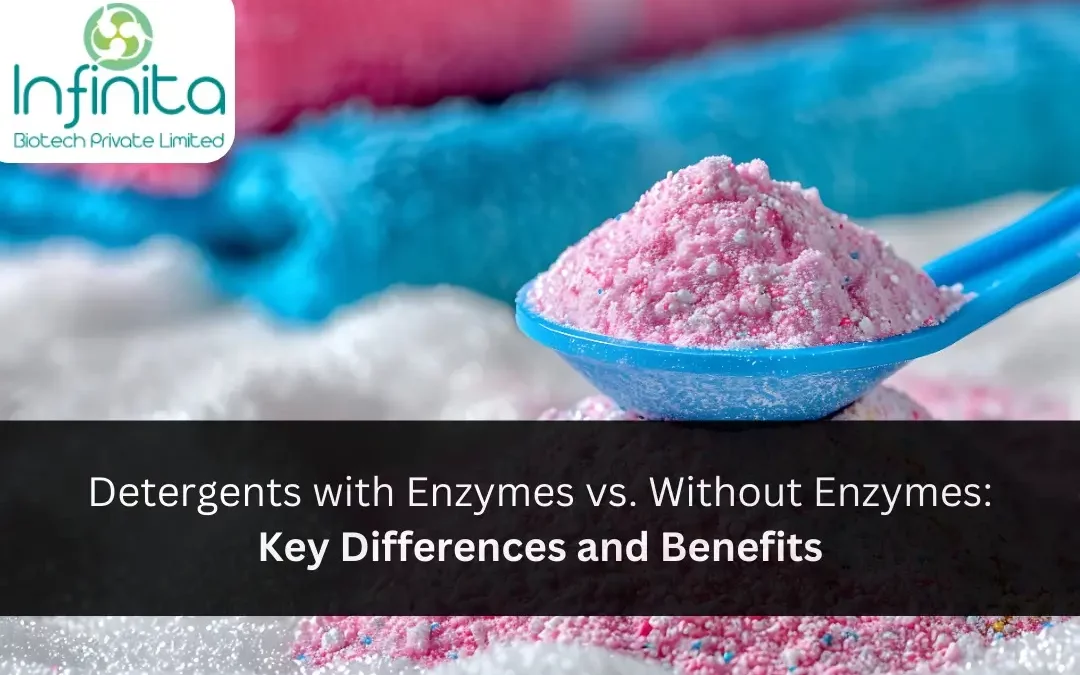Introduction
Laundry detergents have evolved from rudimentary soap blocks to sophisticated chemical marvels that promise cleaner, fresher clothes. Among the key advancements is the advent of enzyme-based detergents, a game-changer in the cleaning industry. But how do these differ from their non-enzyme counterparts? Understanding these differences can help you choose the right detergent for your needs.
What Are Enzymes in Detergents?
Definition and Role of Enzymes
Enzymes are biological catalysts—tiny proteins that accelerate chemical reactions. In detergents, they play a vital role by breaking down stubborn stains.
Types of Enzymes in Detergents
Common enzymes used include proteases for protein-based stains, lipases for grease, and amylases for starches. These naturally derived molecules make cleaning more efficient by targeting specific stain components.
How Detergents with Enzymes Work
Enzymatic Cleaning Mechanism
Enzyme-based detergents operate on a molecular level, breaking down stains into smaller particles that are easier to rinse away.
Targeted Stain Removal
Proteases dismantle egg or blood stains, while lipases tackle oily residues. This enzymatic action allows for deep cleaning even at lower water temperatures, conserving energy and enhancing convenience.
Detergents Without Enzymes: Simplicity in Cleaning
Basic Composition
Non-enzyme detergents rely on a straightforward blend of surfactants, builders, and fillers to clean fabrics.
Effectiveness in General Cleaning
They work by emulsifying oils and suspending dirt particles, making them easy to wash away. While effective for general cleaning, these detergents might struggle with certain stubborn stains, especially at lower temperatures.
Key Differences Between Enzyme-Based and Non-Enzyme Detergents
Ingredients and Composition
The primary distinction lies in their ingredients. Detergent Enzymes contain specialized proteins that actively target and dissolve stains, while non-enzyme detergents depend on chemical reactions alone.
Stain Removal and Temperature Sensitivity
Detergent Enzymes excel in removing organic stains, while non-enzyme options are better suited for basic cleaning tasks. Temperature sensitivity also varies, with enzyme detergents performing optimally in lukewarm water.
Environmental Impact: Enzyme Detergents vs. Non-Enzyme Detergents
Biodegradability and Sustainability
Enzyme-based detergents often shine in eco-friendliness. Since they clean effectively at lower temperatures, they reduce energy consumption. Additionally, enzymes are biodegradable, making these detergents more sustainable.
Energy and Resource Usage
Conversely, non-enzyme detergents may require hotter water and often contain harsher chemicals, which can strain the environment.
The Benefits of Enzyme-Based Detergents
Superior Stain Removal
Enzyme detergents are unparalleled in their ability to remove tough stains, such as grass, sweat, and food residues.
Cost and Fabric Efficiency
They’re cost-effective in the long run, as their efficiency reduces the need for multiple washes. Their compatibility with cold water settings saves energy and is gentler on fabrics, extending the lifespan of your clothing.
When to Choose Non-Enzyme Detergents
Suitability for Delicate Fabrics
While enzyme detergents are versatile, they aren’t ideal for every scenario. Delicate fabrics like silk and wool can be damaged by enzymatic activity.
Addressing Skin Sensitivities
Individuals with extremely sensitive skin might prefer non-enzyme options to avoid potential irritation. For these cases, non-enzyme detergents provide a safer, albeit less potent, alternative.
Conclusion: Finding the Right Detergent for Your Needs
Choosing the right detergent boils down to your specific requirements. If you deal with persistent stains and value energy efficiency, enzyme-based detergents are your best bet. However, for delicate fabrics or simpler cleaning tasks, non-enzyme detergents may suffice. By understanding the strengths and limitations of each, you can make an informed decision that balances performance, cost, and environmental impact.

